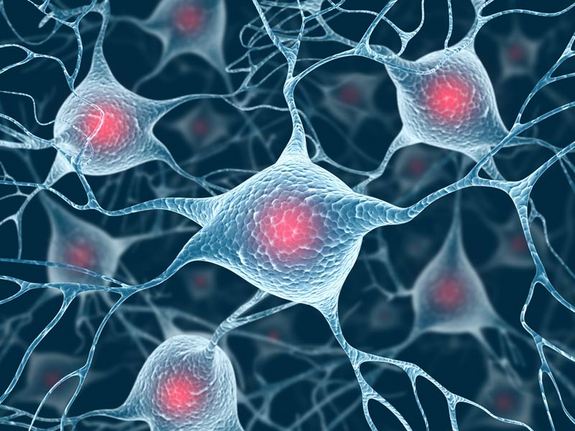Normal Brain Activity Linked to DNA Damage

Brain activity from experiences as common as exploring new locations surprisingly damages the noggin's DNA, hinting that such disruptions may be a key part of thinking, learning and memory, researchers say.
This damage normally heals rapidly, but abnormal proteins seen in Alzheimer's disease can increase this damage further, perhaps overwhelming the ability of brain cells to heal it. Further research into preventing this damage might help treat brain disorders, scientists added.
Explorer mice
Scientists analyzed young adult mice after they were placed into new, larger cages with different toys and odors that they were allowed to explore for two hours. They measured brain levels of a protein known as gamma-H2A.X, which accumulates when breaks occur in double-stranded molecules of DNA.
"DNA comes in double strands, and has the shape of a twisted ladder," said researcher Lennart Mucke, a neurologist and neuroscientist at the Gladstone Institute of Neurological Disease and the University of California at San Francisco. "Breaks in one strand, in one rail of the ladder, occur quite frequently, but breaking both takes quite a bit of damage and, in the brain, was thought to happen mostly in the context of disease." [10 Odd Facts About the Brain]
Unexpectedly, the researchers found such breaks also happened in the neurons of perfectly healthy mice, with up to six times more breaks in the neurons of explorer mice than in mice that remained in their home cages.
"Breaks of double strands of DNA seem to be a part of normal healthy brain activity," Mucke told LiveScience.
Sign up for the Live Science daily newsletter now
Get the world’s most fascinating discoveries delivered straight to your inbox.
These DNA breaks occurred in various brain regions, especially in the dentate gyrus, an area necessary for spatial memory.
"It is both novel and intriguing, [the] team's finding that the accumulation and repair of DSBs [double-strand breaks] may be part of normal learning," said neuroscientist Fred Gage, of the Salk Institute, who did not take part in this study.
Mystery of DNA breaks
It remains uncertain why brain activity causes DNA breaks. Active neurons do generate DNA-damaging chemicals such as free radicals, but neurons in lab dishes did not have significantly fewer breaks when given antioxidant molecules that counteract free radicals.
Instead, the researchers suggest these breaks could actually help with the genetic activity linked with mental activity.
"We are now very excited to explore why neuron activity causes these breaks in DNA — whether these breaks somehow facilitate the rapid conversion of genes into proteins involved in memory and learning and in processing all the information you take in when you do something new," Mucke said.
Many of the DNA breaks were fixed within 24 hours via DNA repair mechanisms in the cells. However, mice genetically engineered to produce a protein fragment known as amyloid beta, which accumulates in the brains of Alzheimer's patients, had more DNA breaks than normal in their brains, a problem that worsened during exploration.
Mice that produce human amyloid beta in their brains often have abnormal brain activity, including epileptic seizures, which can also occur in Alzheimer's patients. The researchers found that blocking this abnormal brain activity with the widely used anti-epileptic drug levetiracetam reduced the number of DNA breaks in the neurons of these mice.
"Levetiracetam is already an FDA-approved drug, and a very small clinical trial has already shown that it could provide some benefits in people with early-stage Alzheimer's," Mucke said. "These findings support the idea that the drug might be able to modify the disease by preventing the accumulation of DNA breaks that may promote its progress."
"We're in the process now of designing a larger-scale carefully controlled clinical trial to see if such a strategy is of benefit," Mucke added. "We encourage people to wait until this data becomes available and not jump the gun and start taking this drug when it hasn't been validated thoroughly yet."
The scientists also found that when mice lacked a protein known as tau, excess amyloid beta no longer caused more DNA breaks.
"Tau is intimately involved with Alzheimer's — it seems to cooperate with amyloid beta," Mucke said. "In the absence of tau, amyloid beta doesn't seem to elicit detrimental effects. We're in the process of developing strategies to manipulate tau in Alzheimer's, and these findings encourage us to intensify and accelerate these efforts."
The scientists detailed their findings online March 24 in the journal Nature Neuroscience.
Follow LiveScience @livescience, Facebook & Google+. Original article on LiveScience.com.











